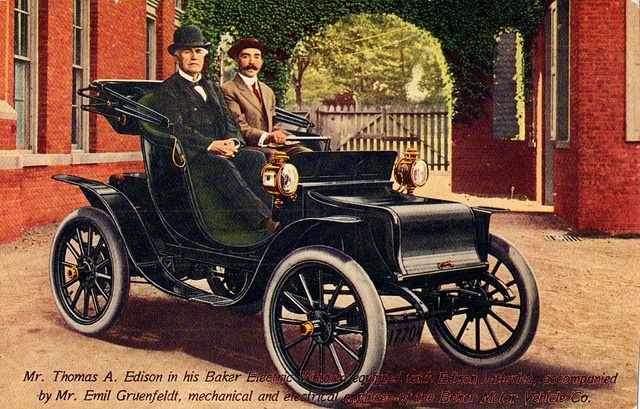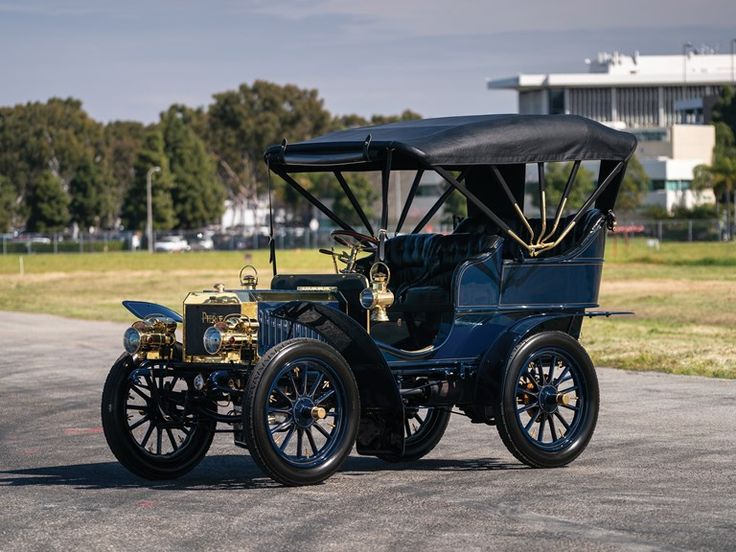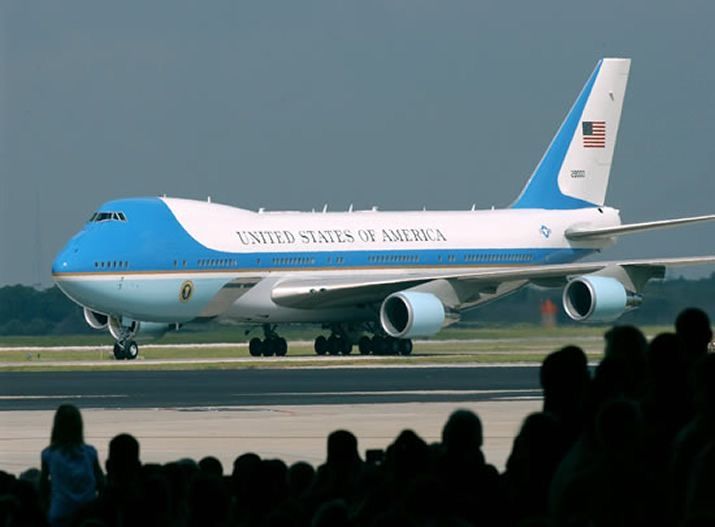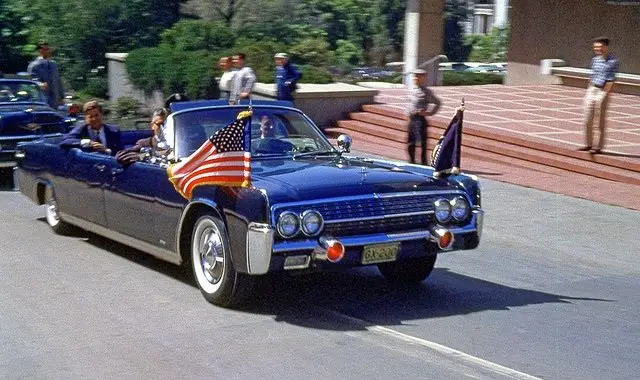The White House has come a long way from horses and carriages to the armored vehicles we see today. In 1909, President William Howard Taft changed history when he converted the White House stables to a garage and purchased four cars, including an electric one. The first official presidential state car appeared in 1939 during Franklin D. Roosevelt’s administration, featuring a two-way radio as one of its early security measures.

What we now know as “The Beast” started with much humbler beginnings. Before Roosevelt’s official state car, presidents either used their personal vehicles or relied on cars provided by Congress. Today’s presidential limousine is a highly customized vehicle built by Chevrolet but badged as a Cadillac, combining luxury with cutting-edge security technology.
Key Takeaways
- The White House garage began in 1909 when President Taft converted horse stables and purchased the first fleet of presidential automobiles.
- Presidential vehicles evolved from basic automobiles to highly specialized security vehicles with advanced communications and defensive capabilities.
- Modern presidential transportation represents both American technological innovation and the changing security needs of the nation’s highest office.
Early Beginnings: The First Presidential Automobiles

The transition from horse-drawn carriages to automobiles at the White House marked a significant shift in presidential transportation during the early 20th century. This change reflected broader technological advancements in American society and transformed how presidents traveled.
The Dawn of the Motor Era in the White House
The White House’s relationship with automobiles began in the early 1900s as motor cars gained popularity across America. Before automobiles, horses provided the primary mode of transportation for the first century of White House history.
The presidential stables, which had housed horses and carriages for decades, would soon face a dramatic transformation. As automobiles became more reliable and practical, they caught the attention of the nation’s leaders.
This technological revolution represented more than just a change in vehicles. It symbolized progress and America’s growing industrial might during a time of rapid innovation and economic growth.
President Taft’s Motoring Moves
President William Howard Taft made history by establishing the first official White House fleet of automobiles in 1909. This bold move demonstrated his embrace of modern technology.
Taft ordered four cars for the White House and converted the presidential stables into a four-car garage. The old carriages were cleared out to make room for his new set of wheels.
The arrival of the automobile at the White House coincided with Henry Ford’s introduction of the Model T in 1908, which revolutionized American society by making automobiles affordable for average Americans. Taft’s automotive enthusiasm reflected this national transformation.
His decision fundamentally changed presidential transportation and set a precedent that continues today with the highly sophisticated presidential motorcade.
The Presidential Garage: Transformations and Technological Advancements

The presidential garage has evolved dramatically from its humble beginnings, adapting to changing security needs and automotive technology while maintaining its role as home to America’s most important vehicle fleet.
Upgrading Security and Comfort
The White House garage underwent significant transformations since President William Howard Taft converted White House stables into the first presidential garage in 1909. This historic change provided space for Taft’s Baker Electric Runabout and Pierce-Arrow vehicles, marking the beginning of presidential automotive history.


As automotive technology advanced, so did the presidential garage. Modern temperature controls, enhanced security systems, and specialized maintenance areas were incorporated to preserve and protect the growing fleet.
The garage now features bulletproof doors, biometric access controls, and emergency power systems. These upgrades ensure that presidential vehicles remain operational during crises or security threats.
The facility also includes dedicated areas for Secret Service vehicle inspections and maintenance performed by specialized technicians with security clearances.
From Horsepower to Armor: The Presidential Fleet
The first official White House automobiles were ordered by President Taft in 1909, when Congress appropriated $12,000 for two vehicles. This purchase represented a technological shift in presidential transportation.
Today’s presidential fleet features heavily modified vehicles built to withstand attacks while providing comfort and communication capabilities. The most famous, nicknamed “The Beast,” combines a truck chassis with luxury car styling and contains:
- 8-inch thick armor plating
- Bulletproof glass
- Sealed cabin with oxygen supply
- Run-flat tires
- Advanced communication systems
The garage houses not only the presidential limousine but support vehicles including SUVs, ambulances, and specialized communication vehicles. Each undergoes rigorous maintenance protocols to ensure reliability.
The evolution from Taft’s pioneering electric vehicles to today’s armored transport reflects changing security needs and America’s automotive technological advancement.
Iconic Presidential Vehicles

Presidential cars represent both national security and symbolic power. These special vehicles showcase American manufacturing while protecting our leaders.
The Reagan Era: Cars and Character
President Ronald Reagan owned several notable vehicles during his time in office and beyond. His personal favorite was a 1952 U.S. Army Jeep that he kept at his California ranch. This practical vehicle reflected his down-to-earth character and love for the outdoors.
For official duties, Reagan often rode in a modified Cadillac limousine. His presidential limousine featured bulletproof glass and armor plating following the 1981 assassination attempt.
Reagan also appreciated American car brands like Chevrolet. He supported domestic auto manufacturing during Japan’s rising car exports in the 1980s. His administration’s “Buy American” stance aligned with his personal vehicle choices.
The Cadillac Connection: A Legacy of Luxury
Cadillac has maintained a long relationship with the White House, providing presidential limousines since the 1930s. These vehicles combine luxury with cutting-edge security features.
The most famous Cadillac presidential vehicle was the convertible in which President Kennedy was riding during his assassination in 1963. After this tragedy, open-top vehicles were eliminated from presidential transportation.
Modern presidential Cadillacs, nicknamed “The Beast,” weigh over 15,000 pounds and feature:
- 8-inch thick armor plating
- Bulletproof glass
- Sealed protection against chemical attacks
- Emergency medical supplies including blood matching the president’s type

Cadillac’s presidential vehicles are custom-built by the Secret Service and General Motors. These cars symbolize American engineering excellence while providing maximum security.
Behind the Scenes: Maintenance and Operations of the Presidential Garage

The presidential garage requires meticulous maintenance and precise logistical coordination to ensure the First Family’s transportation needs are met with the highest standards of safety and reliability. A dedicated team works tirelessly behind the scenes to maintain this critical White House operation.
The White House Mechanics: An Unseen Workforce
The presidential garage employs highly skilled mechanics who undergo rigorous security clearances and specialized training. These technicians maintain not only the president’s limousine but the entire White House fleet.
Many of these professionals come from military backgrounds, bringing discipline and attention to detail to their work. They perform daily inspections, preventive maintenance, and emergency repairs when needed.
The mechanics work in a state-of-the-art facility equipped with specialized tools designed to service armored vehicles. Their workspace remains largely hidden from public view for security reasons.
The White House Transportation Agency has been described as “the most visible unit no one’s ever heard of,” highlighting their critical but often unrecognized role.
Logistical Prowess: Keeping the Wheels Rolling
Transportation coordination for the president involves complex planning that begins days or weeks before any movement. The garage team works closely with the Secret Service to ensure vehicles are positioned correctly for all scenarios.
Presidential motorcades require precise timing and positioning. Vehicles must be fueled, cleaned, and mechanically perfect before every use.
When the president travels, advance teams scout routes and prepare for the arrival of motorcade vehicles. This involves extensive behind-the-scenes work to secure routes and plan for contingencies.
The transition from horse-drawn carriages to automobiles marked a significant shift in White House transportation logistics. In 1909, President Taft converted the carriage room into a garage to house his steam-powered vehicles.
Today’s logistics team manages cargo handling, secure communications equipment, and medical supplies that travel with the presidential vehicles at all times.
Away from the White House: Presidential Transport on the Go

Presidential travel beyond the White House gates requires specialized vehicles and aircraft that prioritize security, communication capabilities, and comfort for the Commander-in-Chief.
Air Force One: The Flying Fortress
The term Air Force One isn’t just a single aircraft but the call sign for any Air Force plane carrying the President. Today’s primary Air Force One is a heavily modified Boeing 747-200B.

This flying White House contains 4,000 square feet of floor space across three levels. It features a conference room, living quarters, and an office for the President.
The aircraft can travel 7,800 miles without refueling and reach speeds over 600 mph. Its advanced communication systems allow the President to run the country from anywhere in the world.
Air Force One is hardened against electromagnetic pulses and equipped with electronic countermeasures for defense. It can be refueled mid-air, giving it virtually unlimited range in emergencies.
From Washington, D.C., to Camp David: Secured Mobility
When traveling from Washington, D.C. to Camp David in Maryland, the President relies on a fleet of specialized ground vehicles or Marine One helicopters.
The presidential limousine, nicknamed “The Beast,” is a custom-built Cadillac with extraordinary security features. Franklin Roosevelt was the first President to use an armored vehicle in December 1941.
Today’s Beast features 8-inch thick doors, bulletproof glass, and a sealed interior protecting against chemical attacks. It travels in a motorcade managed by the Secret Service with identical decoy vehicles.
For trips to Camp David, Marine One provides faster transportation. This helicopter flies in a group with identical decoys, using a secure protocol called the “shell game” to ensure the President’s location remains uncertain to potential threats.
Cultural Impact: The Presidential Garage in American Society

The presidential garage has shaped American culture in ways that extend far beyond its practical function. It represents both the power of the presidency and the country’s deep connection to automotive culture.
Presidential Rides as Cultural Icons
Presidential vehicles have become powerful symbols in American society. When President William Howard Taft ordered the first White House automobiles in 1909, he set a precedent that would influence American car culture for generations.
The presidential limousine particularly stands out as an iconic vehicle. “The Beast,” as the modern presidential limo is nicknamed, captures public imagination with its blend of luxury and security features.
Presidential car choices often reflect the era’s values. Theodore Roosevelt’s horse-drawn carriages symbolized tradition, while JFK’s Lincoln Continental conveyed modern elegance. These vehicles become time capsules of American history.
When presidents adopt new automotive technologies, public interest often follows. This happened when Henry Ford’s Model T was honored at the White House, helping mainstream automobile adoption across America.
The White House Garage in Media and Public Imagination
The White House garage holds a special place in American media and storytelling. Films, books, and television shows frequently feature scenes of presidential vehicles emerging from or returning to this secure location.
News media regularly report on presidential motorcades, with the garage serving as both starting and ending point. These images reinforce the garage’s status as a symbol of presidential power and security.
Car enthusiasts and history buffs alike follow changes to the presidential fleet with keen interest. Online forums and social media light up with discussion whenever a new presidential vehicle debuts.
For the first century of White House history, horses were the primary transportation mode. The transition to automobiles reflected America’s broader industrial transformation and has been documented in numerous historical accounts.
Tour guides at the White House often field questions about the presidential garage and fleet, showing the public’s enduring fascination with this aspect of presidential life.
Modern Developments and the Future of Presidential Transportation

Presidential vehicles continue to evolve with advanced technology to ensure safety, security, and environmental responsibility. These developments reflect both changing global concerns and America’s leadership position.
Advances in Security and Green Technology
The current presidential limousine, nicknamed “The Beast,” represents the pinnacle of security innovation. Built on a heavy-duty truck platform, it features military-grade armor, bulletproof glass, and sealed chambers to protect against chemical attacks.
Recent administrations have pushed for greener transportation options. The White House fleet has begun incorporating hybrid and electric vehicles, reflecting the government’s commitment to reducing carbon emissions.
The Secret Service continuously updates protective features based on emerging threats. Modern presidential vehicles now include countermeasures against electronic interference, drone attacks, and other 21st-century security concerns.
These advancements don’t sacrifice comfort. Despite weighing approximately 15,000 pounds, The Beast includes sophisticated communication systems and medical equipment while maintaining interior luxury.
The Next Generation of Presidential Vehicles
Future presidential transportation will likely balance enhanced security with environmental consciousness. Prototypes already in development feature fully electric powertrains with extended range capabilities for official travel.
Autonomous driving technology may soon play a role in presidential motorcades. AI-enhanced security systems could detect threats faster than human agents, though full implementation remains years away.
William Taft’s pioneering decision to create the first White House garage continues to influence transportation policy. Each administration now reviews and upgrades the presidential fleet, balancing tradition with innovation.
Transportation policies often reflect broader national priorities. As infrastructure and energy concerns evolve, presidential vehicles will likely showcase American technological capabilities while addressing climate goals.
Frequently Asked Questions

Presidential vehicles combine cutting-edge security features with symbolic importance. These specialized cars represent both the protection needs and historical evolution of White House transportation.
What are the specifications of the current presidential vehicle, ‘The Beast’?
The current presidential limousine, nicknamed “The Beast,” weighs approximately 15,000-20,000 pounds. It features 8-inch thick armor plating and bulletproof windows that are several inches thick.
The vehicle has specially designed run-flat tires that can continue functioning even when punctured. Its hermetically sealed interior protects against chemical and biological attacks.
The Beast carries emergency medical supplies, including bags of the president’s blood type. It’s powered by a diesel engine and gets approximately 3-4 miles per gallon due to its extreme weight.
Which brand manufactures the United States President’s official vehicle?
Cadillac, a division of General Motors, manufactures the presidential limousine. This continues a long tradition at the White House of using American-made vehicles.
While the exterior resembles a Cadillac, the vehicle is built on a heavy-duty truck chassis. The Secret Service works closely with GM engineers to create these specialized vehicles.
Cadillac has provided presidential limousines since the 1980s, taking over from Lincoln which dominated the presidential fleet for several decades.
How many units of the presidential car known as ‘The Beast’ are in existence?
The Secret Service maintains a fleet of approximately 12 identical presidential limousines. This allows for redundancy and deployment to multiple locations as needed.
These vehicles travel in the presidential motorcade and can be transported worldwide on cargo planes ahead of presidential visits. Multiple identical vehicles help maintain security by creating uncertainty about which car contains the president.
The exact number is carefully guarded information for security reasons.
What are some interesting facts about the President’s car, ‘The Beast’?
The presidential limousine contains sophisticated communications equipment that allows the president to maintain secure contact with government officials. Its doors weigh as much as those on a Boeing 757 aircraft.
The Beast carries defensive countermeasures including smoke screens, tear gas launchers, and reportedly even vials of the president’s blood type. Its fuel tank is armor-plated and filled with special foam to prevent explosion if struck.
Unlike normal vehicles, The Beast’s interior features remain classified. The car travels with its own mechanic team specialized in its unique systems.
Who was the first U.S. President to have a car, and what was the model?
William Howard Taft was the first president to officially embrace automobile technology at the White House. In 1909, he converted the White House stables into a garage to house his vehicles.
Taft’s administration purchased four automobiles: two Pierce-Arrows, a Baker electric car, and a White steamer. These vehicles represented the transition from horse-drawn transportation to the motor age.
Taft’s adoption of automobiles marked a significant shift in presidential transportation, though Theodore Roosevelt had occasionally ridden in cars during his presidency.
Does the Presidential fleet include a dedicated garage within the White House premises?
Yes, the White House maintains a secure underground garage facility for the presidential fleet. This facility is equipped with maintenance areas and security features.
The garage houses not only the presidential limousines but also the various support vehicles used in motorcades. The facility is staffed by Secret Service personnel and specialized mechanics.
The original White House garage was created in 1909 when President Taft converted the carriage room into space for his vehicles, marking the end of the horse’s primacy at the presidential residence.



